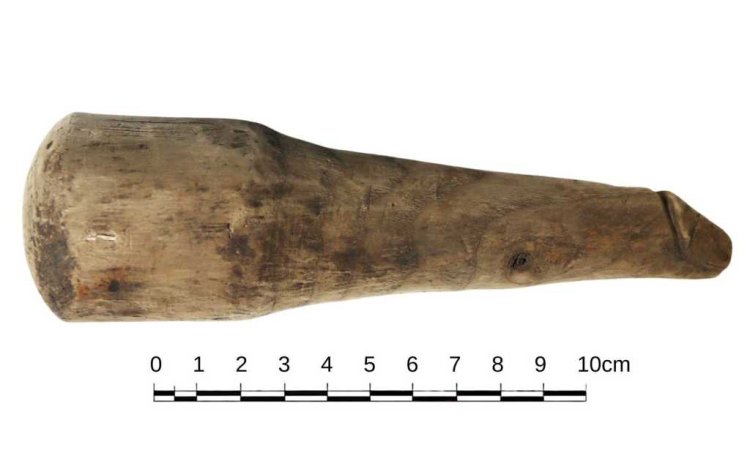The history of vibrators begins much earlier than one might imagine. The ancient Roman civilization is known for having created the first mechanical devices used for sexual pleasure.
History and Evolution of Vibrators: A Quest for Human Intimacy
The evolution of vibrators is an intriguing story that spans centuries of technological innovation, cultural shifts, and social challenges. These devices have been created to fulfill a variety of purposes, but their primary role has always been to bring pleasure and comfort to people’s lives. In this article, we will explore the fascinating history of vibrators, tracing their journey from ancient times to the present day, discovering who invented them, when, and why.
A Vibrant Ancient Past
The history of vibrators begins much earlier than one might imagine. The ancient Roman civilization is known for having created the first mechanical devices used for sexual pleasure. One of these devices, known as a "dilator," was a bronze cylinder with a pear-shaped head that could be expanded and contracted. These tools were used by both men and women.
In ancient Japan, objects made of wood and ivory were used for similar purposes. These ancient devices were manually operated and bore little resemblance to modern vibrators, but they are a clear example of how the human desire to explore sexual pleasure is deeply rooted in history.
The Invention of the Vibrator
The next step in the evolution of vibrators was taken in the 19th century. While the exact reason for the invention of the vibrator is still debated, there are some interesting theories.
The Medical Theory
In the 19th century, many women were diagnosed with "female hysteria," a medical condition with symptoms ranging from anxiety and irritability to "erotic tendencies." The common medical treatment for this condition was "paroxysmal therapy," which involved doctors inducing orgasms in patients to relieve the symptoms. This process was extremely tiring for the doctors and was often performed manually. The invention of the vibrator was partly the result of finding a more efficient way to treat patients with female hysteria.
Dr. Granville’s Invention
In 1880, British physician Joseph Mortimer Granville invented the first dry electric vibrator. This device, known as "Granville’s Hammer," was originally conceived as a medical instrument and was used by doctors to treat a variety of conditions. Although Granville created the vibrator with medical purposes in mind, it was only a matter of time before it began to be used for sexual pleasure as well.
The Rise of Home Vibrators
With advancements in electrical technologies in the 19th and 20th centuries, vibrators became smaller, more accessible, and more common. These devices were no longer reserved for medical offices but could also be found in private homes.
Crank Vibrators
In 1902, the American company Hamilton Beach introduced the first domestic electric vibrator to the market. This device, known as "Vibro," was originally marketed as a device for treating fatigue and muscle aches. However, its design made it equally suitable for more intimate uses.
Advertising and Market
At the beginning of the 20th century, vibrators began to be advertised directly to women in women’s magazines. The ads promoted these devices as remedies for fatigue, poor digestion, and even as beauty tools. The advertising was often discreet, but clearly hinted at their sexual use.
The Decline and Resurgence
In the 1920s and 1930s, with the evolution of censorship laws and the growing influence of religious and moral movements, vibrators began to disappear from the market. The Great Depression also contributed to reducing the production and availability of these devices.
However, interest in vibrators never completely faded. In the 1960s and 1970s, with the sexual revolution and the feminist movement, vibrators came back into the spotlight. They were rediscovered as tools for pleasure and self-exploration, rather than as medical therapies.
The Modern Vibrator Industry
Today, the vibrator industry is continuously growing. Technology has enabled the production of advanced devices that offer a wide range of stimulations and functionalities. Vibrators have become an integral part of sexual culture and are openly accepted.
Advanced Materials
Modern vibrators are made with body-safe materials such as medical-grade silicone or thermoplastic elastomer. These materials are non-toxic and easy to clean, ensuring a safe and hygienic experience.
Variety of Designs
Today, vibrators come in a variety of shapes and sizes, each designed to provide unique stimulation. From classic designs to wearable versions, consumers have a wide range of choices.
Connectivity and Remote Control
Some modern vibrators offer advanced features such as Bluetooth connectivity and remote control via smartphones. These options allow couples to experience new forms of intimacy, even from a distance.
The Revolution of Intimacy
The history of vibrators is a testament to the evolution of our understanding of intimacy and pleasure. What was once considered taboo has now become an accepted and appreciated part of human sexual life. Vibrators, born in ancient times and perfected over the centuries, are now an integral part of the expression of human sexuality.
Conclusions
The evolution of vibrators is a fascinating story of innovation and cultural change. From ancient times to the present, these devices have traveled a long way to become what they are today. They have gone from being medical instruments to objects of personal and shared pleasure. The history of vibrators is a testament to the human desire for connection and pleasure, and to humanity’s ability to evolve and embrace change.
